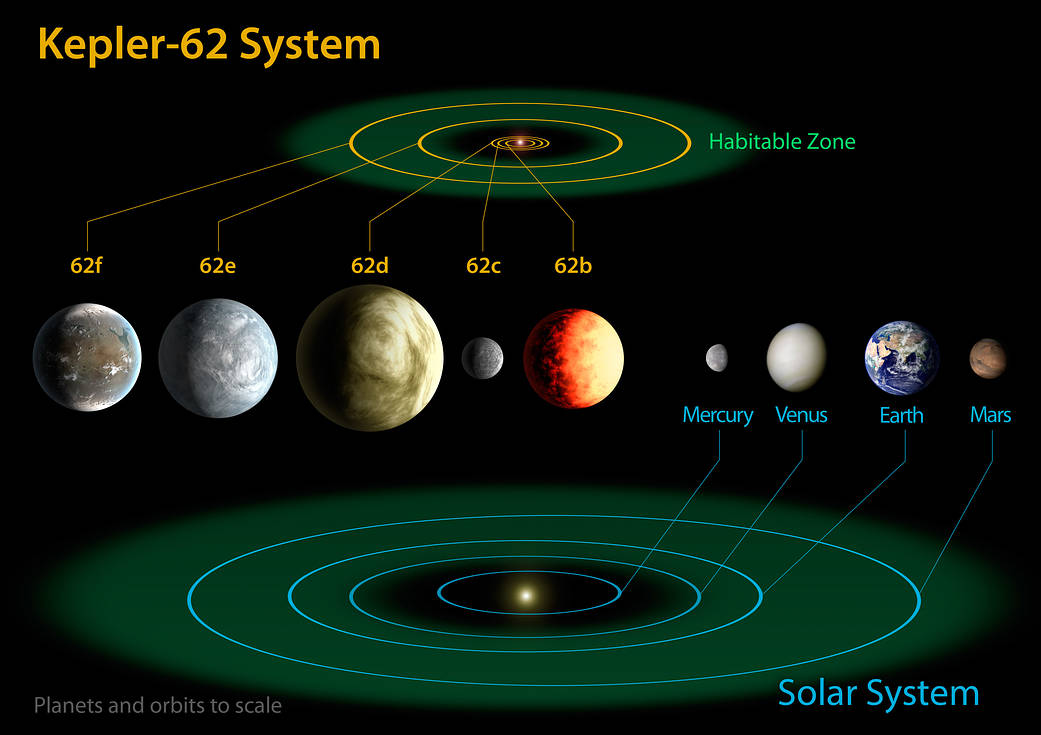
04.18.13 – The diagram compares the planets of the inner solar system to Kepler-62, a five-planet system about 1,200 light-years from Earth in the constellation Lyra. The five planets of Kepler-62 orbit a star classified as a K2 dwarf, measuring just two thirds the size of the sun and only one fifth as bright. At seven billion years old, the star is somewhat older than the sun.
Much like our solar system, Kepler-62 is home to two habitable zone worlds, Kepler-62f and Kepler-62e. Kepler-62f orbits every 267 days and is only 40 percent larger than Earth, making it the smallest exoplanet known in the habitable zone of another star. The other habitable zone planet, Kepler-62e, orbits every 122 days and is roughly 60 percent larger than Earth.
The size of Kepler-62f is known, but its mass and composition are not. However, based on previous exoplanet discoveries of similar size that are rocky, scientists are able to determine its mass by association.
The two habitable zone worlds orbiting Kepler-62 have three interior companions, two larger than the size of Earth and one about the size of Mars. Kepler-62b, Kepler-62c and Kepler-62d, orbit every five, 12, and 18 days, respectively, making them very hot and inhospitable for life as we know it.
The artistic concepts of the Kepler-62 planets are the result of scientists and artists collaborating to help imagine the appearance of these distant worlds.
The Kepler space telescope, which simultaneously and continuously measures the brightness of more than 150,000 stars, is NASA’s first mission capable of detecting Earth-size planets around stars like our sun.
Read more about the discoveries here: https://www.nasa.gov/centers/ames/events/2013/kepler-62-and-69-presskit.html.
Image credit: NASA Ames/JPL-Caltech























